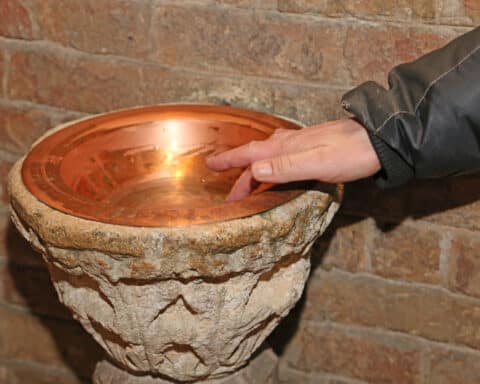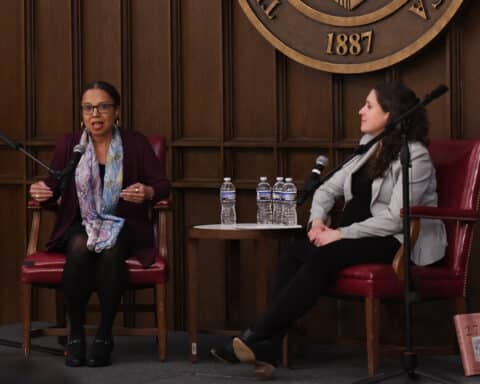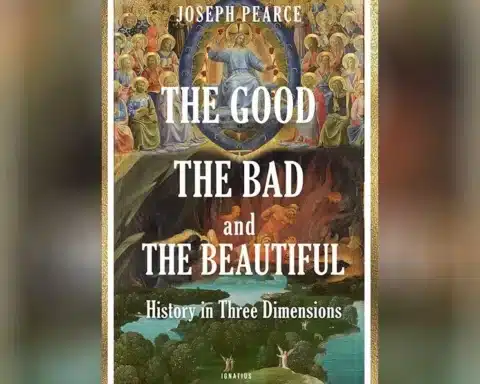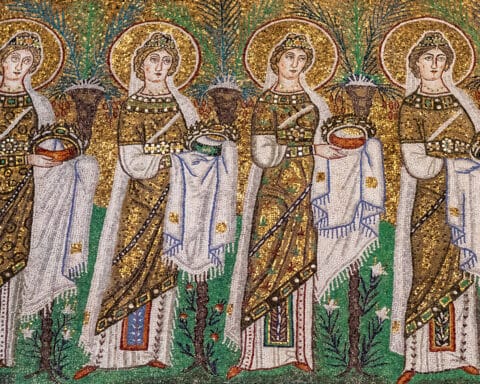In the story of the Church, the 13th century is an epoch chapter. The Catholic Church was at the center of life; a unity developed among God’s people that encompassed not only religion but culture, laws and society in general. The century witnessed historic events such as the Magna Carta, architectural advancements like Gothic churches, saintly people such as Francis of Assisi and Elizabeth of Hungary, advances in science and education through new universities, the beginning of city hospitals, eminent writers and theologians such as Dante and St. Thomas Aquinas, beloved kings such as St. Louis IX, and not so beloved such asFrederick II and Pope Innocent III. The 13th century was also the time of heretics and inquisitions, crusades and ecumenical councils.
Fourth Lateran Ecumenical Council
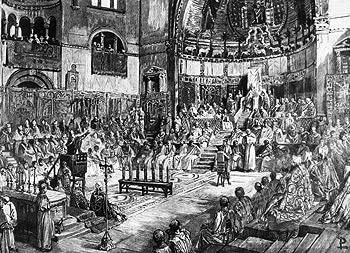 If Church ecumenical councils were ranked based on their lasting impact, the Fourth Lateran Council of November 1215, would be among the greatest. Pope Innocent III called this council primarily because of the threats to Catholicism coming from within the Church, coming from a growing number of heretics. But there was much more found in the 71 canons or decrees resulting from this council. Some historians insist that Pope Innocent III created all the canons prior to the council and the attending bishops simply agreed. This argument is not without merit as the council comprised only three sessions. Among the canons, the first makes it clear there is only one Church: “There is one Universal Church of the faithful, outside of which there is absolutely no salvation.” This canon also introduces the term transubstantiation. The fact that the substance of the bread and wine become the body and blood of Christ, is from that time official dogma of the Church.
If Church ecumenical councils were ranked based on their lasting impact, the Fourth Lateran Council of November 1215, would be among the greatest. Pope Innocent III called this council primarily because of the threats to Catholicism coming from within the Church, coming from a growing number of heretics. But there was much more found in the 71 canons or decrees resulting from this council. Some historians insist that Pope Innocent III created all the canons prior to the council and the attending bishops simply agreed. This argument is not without merit as the council comprised only three sessions. Among the canons, the first makes it clear there is only one Church: “There is one Universal Church of the faithful, outside of which there is absolutely no salvation.” This canon also introduces the term transubstantiation. The fact that the substance of the bread and wine become the body and blood of Christ, is from that time official dogma of the Church.
The canons addressed a wide array of topics, including the excommunication and punishment of heretics, the requirement that Catholics annually receive the Eucharist and confess their sins, what clothing Jews and Muslims) should wear to distinguish themselves from Christians, a detailed reform of the clergy regarding how to act and what to wear, and that the Church could not be taxed without the pope’s approval. Pope Innocent III also used this gathering to encourage a new Crusade to take back the Holy Land.
Two other Ecumenical Councils occurred later in the century: Lyons I (1245), which dismissed an emperor, and Lyons II (1274), which even with agreement among attendees, failed to end the schism between the Greek and Roman churches.
| Important dates and figures of the 13th century |
|---|
|
The papacy
Among the 18 popes of the 13th century, the first and last had historical impact on the Holy See and the Church. The last pope, Boniface VIII (r. 1294-1303), would have a role in the demise of the papacy, but we’ll discuss him later.
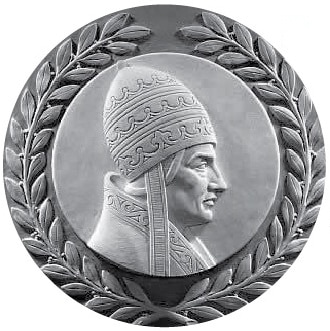
Innocent saw his position as authoritative over every nation-state and was quick to intervene in affairs of government. He frequently used the canonical penalties of excommunication and the interdict to bring European monarchs in line with his desires. His most notable use of these penalties was against King Philip II of France in 1200 and King John of England in 1208. In France the situation lasted eight months, but in England it lasted six years. The story concerning England is one about two stubborn leaders, and the rift between pope and king impacted the spiritual life of every Catholic in England. Eventually, Innocent achieved the upper-hand: King John pledged allegiance to the pope and England became a vessel of the papacy. Not everyone in England liked this idea.
Magna Carta

The Magna Carta would soon have impact on other countries when, for the first time, laws were passed assuring the rites of citizens, laws that also applied to a monarch.
The Crusades
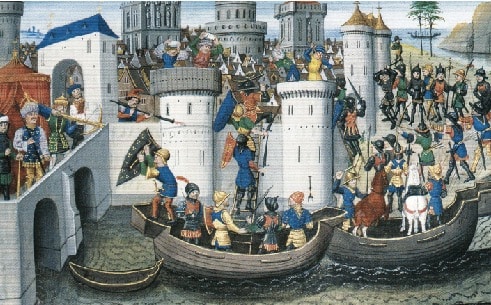
The other crusades that took place in the 13th century were, with the exception of one, led by Emperor Frederick II, failures.
The monarchs (Frederick II and Louis IX)
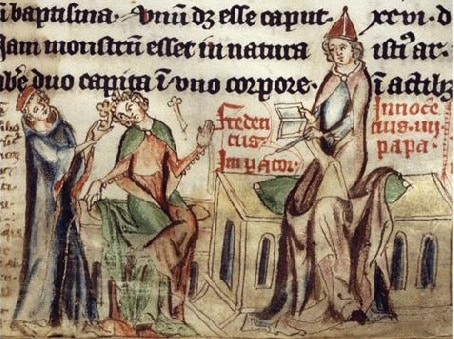
Frederick (1194-1250) was King of Sicily, then King of Germany, and in 1220 crowned Emperor of the Roman Empire. Frederick was a most progressive leader, spoke several languages, was interested in other cultures, encouraged artists, scientists and writers — a great influence on the Renaissance.
Prior to being crowned emperor by Pope Honorius III (r. 1216-27), Frederick vowed that he would lead a Crusade to the Holy Land and would defend the Church against the rising heresies in Europe. He did stand up to the heretics but waited seven years before organizing a Crusade to the Holy Land, which he again delayed, citing illness. The pope at the time, Pope Gregory IX (r. 1227-41), refused to believe Frederick was ill and excommunicated the king for not carrying out the Crusade. The next year, while still excommunicated and without the pope’s sanction, Frederick launched another Crusade and, upon arriving in Jerusalem, negotiated a treaty with the Muslims that lasted 15 years.
Excommunicated four times, Frederick was never a friend to the papacy no matter who was the pope. He saw his role as emperor, akin to the early emperors of the Roman empire, with everyone giving him allegiance and loyalty, including the pope. At one point, Pope Gregory called for a General Council of the Church to be held in 1241 in Rome to deal with the difficult emperor. Frederick reacted by intercepting a ship carrying 100 bishops and cardinals bound for the council and held them hostage. Later in 1245, Innocent IV (r. 1243-54) called the First Ecumenical Council of Lyons. The council deposed Frederick calling him an outcast and deprived him “of every honor and dignity.” Defrocked as emperor, Frederick remained a strong force in Italy and parts of Germany until he died in 1250.

King Louis IX, later St. Louis, was a completely different ruler than Frederick. He was not the Roman Emperor but the King of France from 1226 until 1270. This era of French history is known as the golden age of St. Louis when the country reached new heights of achievement in government, arts, architecture and was not only a time of economic prosperity but of peace. Louis proved himself as a servant of God and of France; he was fair-minded, took time to hear complaints of his people and ensure justice. He advocated solving disputes in a courtroom rather than by combat.
His generosity and compassion for others is evidenced by his daily feeding the poor at his table and at times serving them himself. He often went to hospitals, personally ministered to the sick, and opened himself to every kind of disease. Louis built churches, went to Mass every day (sometimes twice), fasted on Fridays and was, in sum, a staunch Catholic. Known as “the most Christian king,” everything he did was for the glory of God. He generally supported the papacy but did not hesitate to resist any act of a pope that interfered with his government. On two occasions, Louis led Crusaders against the Muslims holding the Holy Land. The first Crusade (which was the seventh Crusade overall) lasted from 1248-54 and was a failure. In fact, Louis was captured and held hostage for a year. In 1270, he led another Crusade during which he contracted typhus and died at age 56. In 1297 he was canonized by Pope Boniface VIII. St. Louis is considered among the greatest monarchs in history.
Heretics
Beginning in the 12th century, two heresies sprung up in southern France: the Waldenses and the Albigensians. The Waldenses were led by a wealthy merchant named Peter Waldo, who began widely advocating that all men should pursue a life of poverty. He not only influenced the laity but challenged the Catholic clergy, many of whom were living lavish, morally corrupt lifestyles. Waldo and his followers publicly assailed the Church and the priests, who they believed unworthy to administer the sacraments or teach the Gospel. The group went about the countryside preaching their version of the Gospel and in the late 12th century broke with the Church denouncing the pope. This movement would spill over into the next century. The corruption among the clergy, who the laity saw as hypocrites, was the motivation for many Catholics to split away from the Church.
A more radical group were the Albigensians, named after the town of Albi, France. They denied most Church teachings like the Incarnation, the Real Presence, the humanity of Christ and the Resurrection. They rejected the sacraments including marriage; conversely, they taught that abortion and suicide were commendable acts. Jesus, the Albi claimed, came to earth as a spirit and was not God. Such beliefs could not be tolerated by the Vatican; as the foundations of the Church were being attacked, the teachings of Jesus and the peaceful coexistence between Catholics was at risk. Worse, the heretics’ numbers were growing, and their dogma was spreading.
Pope Innocent III tried numerous methods to save these confused Catholics, these heretics, including sending envoys for face to face meetings, but nothing worked. Finally, he organized Crusaders from Northern France to end the heresies, focusing on the Albi. In 1209, locations where the heretics were suspected to reside were attacked and people thousands were massacred, including many who were not heretics. While Innocent did not intend for such carnage, these killings happened on part of his watch. Such attacks continued until 1229 when most organized heretics were eradicated.
While the heretical strongholds were wiped out, remnants would surface throughout Europe. In 1232, Pope Gregory IX sought to end this lynch mob mentality and instituted special tribunals to find, try and attempt to reform — but if necessary punish — the heretics. This was the beginning of the Papal Inquisition. When the inquisitors arrived in a town suspected of harboring heretics, they would call the residents together and give individuals the opportunity to voluntarily confess being a heretic. Those coming forward would normally receive a light sentence, while those later found guilty received more severe punishment, such as long prison terms or, in some cases, burning at the stake. All sentences were carried out by civil authorities. No matter how viewed, the Church even though following the judicial procedures and notions of the time, sanctioned cruelty, even torture. Later popes have apologized for these acts.
Franciscan and Dominican Orders
Led by St. Francis of Assisi (1181-1226), the Franciscan order was approved by Pope Innocent III in 1210. Francis and his followers traveled around, like the Waldenses, preaching the gospel. But Innocent saw the Franciscans as different in that they embellished the teachings of the Church, would awaken a renewal to the true Gospel and were advocates for the papacy. As such, they countered the heretics of the time. The Franciscans owned no property, had no place to call home, begged for food, sought to live in absolute poverty and followed Christ in all ways. Their leader, Francis, is the first person the Church authenticated to have received the stigmata, the five wounds of Christ. Although he was not an ordained priest, his preaching and imitation of Christ have influenced men and women throughout the centuries. He didn’t just preach the Gospel; he lived the Gospel. Some argue that after the Holy Family, he is the most esteemed individual in Church history.
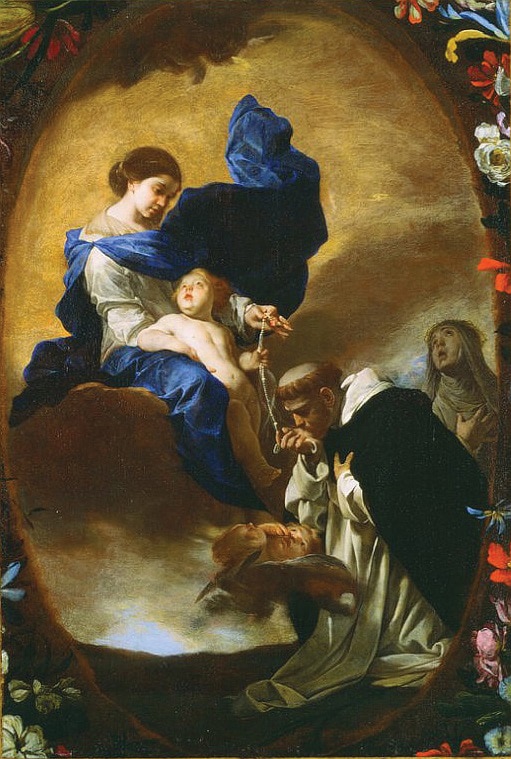
Born in 1170, St. Dominic, unlike St. Francis, was an ordained priest and as early as 1203 was preaching against the Albi in southern France. Legend holds that the Rosary was revealed to him by the Blessed Mother and she instructed him to use it against the heretics: “If you want to reach these hardened souls and win them over to God, preach my Psalter” (Psalter meaning the angelic prayer, the Hail Mary). Many were attracted to Dominic’s sanctity, and in 1216 he founded the Dominican Order, which he called the Order of Preachers. This order was devoted to the teachings and preaching the message of Christ, the true faith, and like the Franciscans, went out into the countryside delivering the Gospel. Because of their avoidance of personal property and possessions, the Franciscans and Dominicans became known as the Mendicant Orders. Mendicant is a Latin word meaning to beg. Many of the Catholic faithful often related better to the itinerant friars than to their local clergy.
| An era of holy Doctors |
|---|
|
Four of the Church’s most renowned saints and Doctors of the Church lived during the 13th century:
Other saints from this time included:
|
Holy See declines
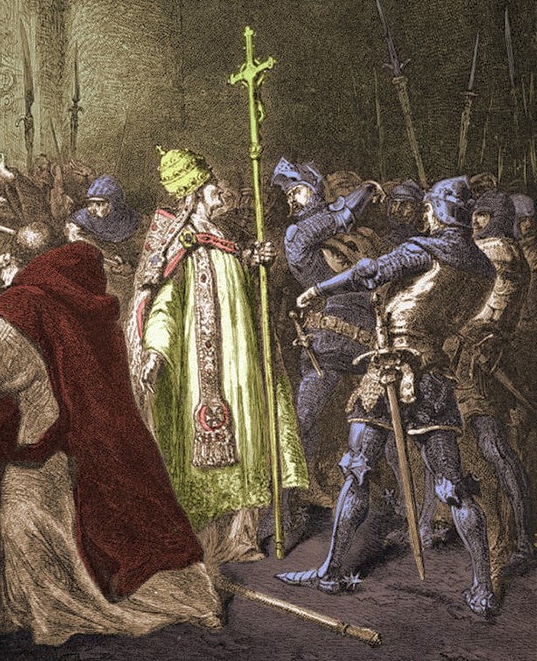
Between 1250 and the early 14th century there was no crowned Roman Emperor, and individual monarchs began to consolidate power, grow self-reliant and seek independence from outside influence. King Philip IV (1285-1314) was such a ruler. He would come head to head with Pope Boniface VIII in 1296 when he attempted to tax the clergy. Boniface was set on the return of a strong papacy in the model of Innocent III and pointed out that such taxation was not permitted without permission of the pope. Their bitter confrontation set off a chain of events eventually leading to the papacy leaving Rome, residing in Avignon, France for 70 years — a period when there was more than one pope. Part of this turmoil included Philip ordering the kidnapping of Boniface. Thus, the end of the 13th century was the beginning of one of the great crises in the Church.
D. D. Emmons writes from Pennsylvania.


